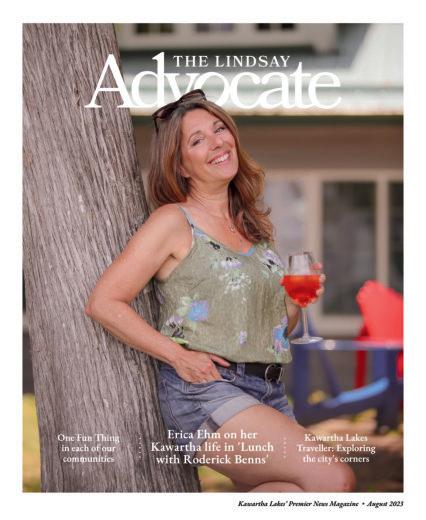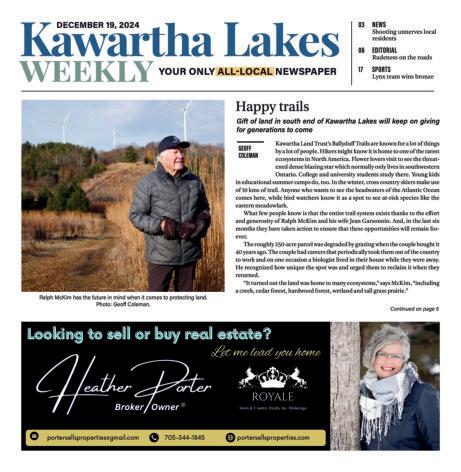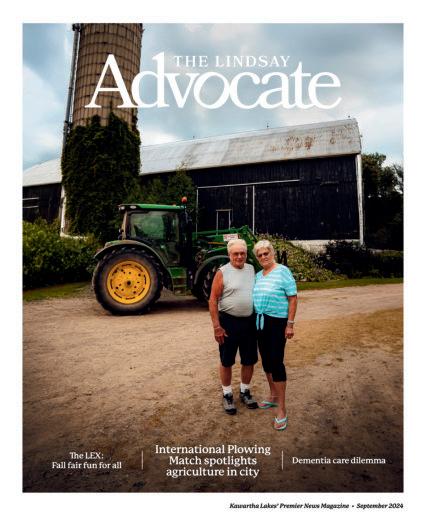Connecting young people with the trades for future success

Tariff war: Local industry tries to keep it Canadian
Mansur’s Musings: To fail is human


Connecting young people with the trades for future success

Tariff war: Local industry tries to keep it Canadian
Mansur’s Musings: To fail is human

FIRST QUARTER 2025

Author EVAN CONNOLLY
705.928.5604
Office 705.328.3800
birdhouserealty.ca
With the unsettling trade war, forecasting and quantifying how tariffs will weigh on the economy and housing market is problematic.
“Ifthismadnesscontinues wearegoingtoseea situationinwhichpolicy interestrateswillgobelow 2%”-BenjaminTal,Chief Economist,CIBC
The silver lining may be continued and additional rate cuts from the Bank of Canada. For Canadians, the lower borrowing costs could boost housing back to pre-pandemic levels faster than anticipated.
Tariffs alone are unlikely to influence housing near term. However, uncertainty will be the barrier to move for many homeowners.
313ActiveListingsin Kawartha Lakeswith AveragePricesup3%YoY to$758,979(Feb2025)


Over the last year, mortgage rates and supply have trended in the right direction while sales activity remained flat. Sellers jumping into the market before spring could be a sign of cautious optimism.
NewlistingsinCanada jumped11%MoMinJan. BiggestjumpsinceFeb 2022.
Amongst all the uncertainty, it’s important to remember demand hasn’t gone away. When we see the inflection point for sales and prices is a matter of time.
First time buyers are expected to drive housing activity in 2025.
“Lowerborrowingcosts areexpectedtounlock pent-updemandand boost market momentum.”
- RobertHogue,Assistant ChiefEconomist,RBC
Buyers have the widest selection of inventory seen in years, and combined with lower interest rates and changes to mortgage rules, the dynamic has shifted.
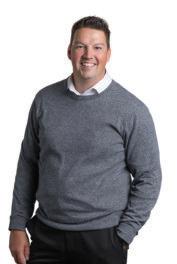


“Banksareeagerto capturebusinessandwill aggressivelycompeteon mortgagerates.”PenelopeGraham,Head ofContent,Ratehub.ca
While homes take longer to sell, homeowners are listing before house hunting. From less competition and no contingency of selling, first time buyers have leverage to get into the market.
Canada: Activity to pick up as interest rates ease further
Home resales, thousands of units, seasonally adjusted and annualized
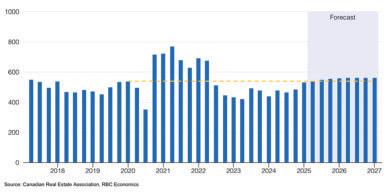



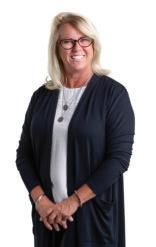
As your locally owned clinic for almost three decades, Lindsay Ear Clinic is dedicated to serving Kawartha Lakes and Bobcaygeon. Our audiologists provide personalized solutions for hearing issues, vertigo, tinnitus, and advanced earwax concerns. Being independent allows us to prioritize your well-being with cutting-edge hearing aid technologies.
Your story is our priority, we’re here for


One


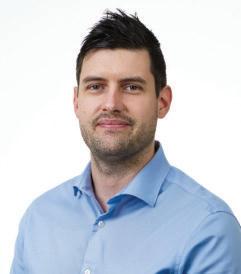

The Operating Engineers Training Institute of Ontario (OETIO) is IUOE Local 793’s training division, offering state-of-the-art training through two campuses - one located in Oakville and the other in Morrisburg.

OETIO is an approved training delivery agent for the Ministry of Labour, Immigration, Training and Skills Development and is registered
as a private career college under the Private Career Collages Act, 2005.
OETIO offers apprenticeship training programs in heavy equipment (dozer, excavator and tractor loader backhoe),
tower and mobile crane, and concrete pump. Other training programs offered to IUOE Local 793 members and fee payers are heavy equipment, drill rig, and commercial truck driving. OETIO and IUOE Local 793 are dedicated to providingqualitytrainingconsistentwith evolvingindustryneedsandgovernment standards to ensure a safe, efficient and effective construction industry.


Roderick Benns


Rebekah McCracken



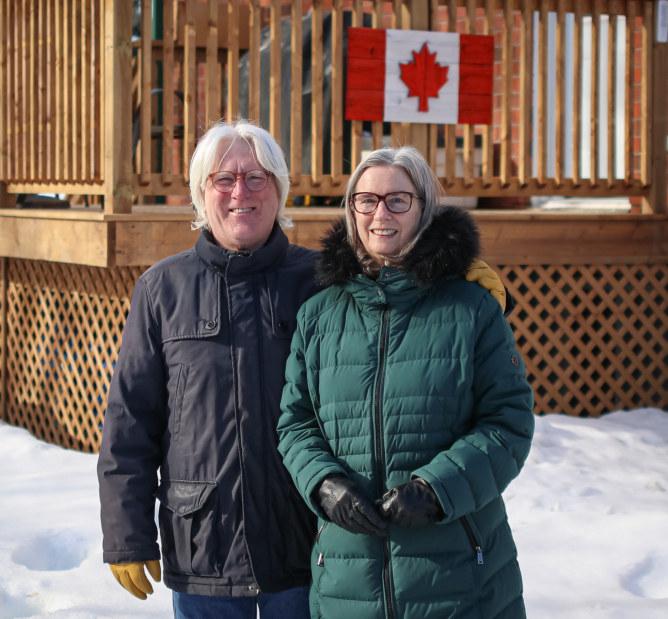
David and Marilyn MacMillan moved to Lindsay about a year ago to enjoy the trails and proximity to nature. See our Newcomer feature on page 38.

Please send editorial inquiries to Roderick Benns at roderick@lindsayadvocate.ca or 705-341-1496.
Please send ad inquiries to Darren at 705-991-3188 or darrenhoiting@outlook.com, or to Cara Baycroft at 905-431-4638
lindsayadvocate.ca • @lindsay.advocate
Getting students interested in the trades was the goal of Manufacturing Doors Open event. 10
Failure is something to face and learn from.
Uncertain times: Trade war could have local repercussions. 22 19
letters to the editor 6 • benns’ belief 9 • mansur’s musings 19 business today 22 • KL public library 30 • crossword 31 cool tips for a hot planet 33 • just in time 34 trevor’s take 36 • the marketplace 37 • newcomer 38
our mission
Fireside Publishing House is the premier print media company in Kawartha Lakes through its family of magazines and all-local weekly newspaper. We believe that community-based media can bring people together and change lives for the better through the power of storytelling, reflecting local culture, and creating informed and engaged citizens. Our commitment is to deliver high-quality and relevant content that reflects the diverse voices and experiences of our communities. We believe in the transformative power of local media to inspire, educate, and empower.

In Benns’ Belief, March edition of the Advocate, I was pleased to see Benns write about young men and their work experiences. I had 16 different jobs between age 8 and 23 when I graduated from university in 1975.
A paperboy in Oshawa was first, then the same in Willowdale at age 11. Next, a golf caddie, factory worker, farm hand near Iron Bridge Ontario, dish washer at the local hospital, Canadian Tire warehouse worker, Consumers Distributing retail/warehouse worker, landscape worker (grass cutting mostly), self-employed house painter, factory worker in London England, self-employed window cleaner for residential homes, land survey assistant for the construction of Hillcrest Mall in Richmond Hill, swimming pool construction and maintenance, physical fitness consultant at e Fitness Institute in Willowdale, lab assistant at University of Waterloo, research assistant. Most of the jobs after age 14 were part time, or summer jobs, or four-month work terms during university years 1970 to 1975. I was able to pay for my university education without loans or parental assistance.
ose were the golden years to find work if you wanted it. Are these times the end of such work opportunities for boys, hoping to gain work experience on the path to becoming men?
— Gene Balfour, Fenelon Falls
I was so incredibly disappointed by the Benns’ Belief article in the Advocate’s March issue. It was such a missed opportunity. e first paragraph read like a proverbial slap in the face to every woman, especially during the month when International Women’s Day is celebrated.
It set the tone for what sounded like a misogynistic chant about why boys and men should have all the power and privilege to do whatever they want with little or no consequence. Perhaps Benns would like an International Men’s Day.
It’s sad to think that in this day and age, where there is still so much inequality between men and women, where women all over the world are still being oppressed, and where women are losing more autonomy than they’re gaining, this is the article Benns chose to write and publish.
— Karen MacNeill, Kawartha Lakes
If men didn’t have a long history of oppressing women, if women were not silenced by men, if patriarchy didn’t erase women from history, March 8 (International Women’s Day) wouldn’t be necessary. I am writing to express my distaste for this month’s Benns’ Belief which focussed specifically on men. Adding insult to injury, it was done as an introduction to International Women’s Day (IWD). Does this not defeat the purpose of IWD? Does this not cast a shadow over the point of Women’s Day where once again, men bully their way into something that has nothing to do with them? It’s one day, for goodness’ sake. Could you not have waited? Of course, Benns’ points are absolutely valid and important. I agree with you. Let’s get that message out there. Just not now. e article could have been placed in a different time slot, and in fact, could have possibly gained more traction. Let’s leave IWD as sacred until it is no longer needed; we’re far from there yet. And, for the record, I am a cis male. Happy IWD to all of the amazing women out there…keep up the good fight.
I appreciate the chance to reflect on this. e Advocate has a long history of supporting women, including hosting annual International Women’s Day events which are always well received. I guess I thought the column was an interesting counterpoint to our International Women’s Day issue. As someone who worked for the Ministry of Education for nearly a decade, the declining academic achievement of boys was a legitimate policy concern. However, this was an edition where the focus was supposed to have been on women – mea culpa.
— Roderick Benns, publisher
I love this truthful, non-apologetic and real description of motherhood in the 20s. (We celebrate women – but we still undervalue them, too, March Advocate.) I remember reading about the “second shift” of women when I was studying Psychology and Sociology at York University back in the 90s. at is, having a full-time career position and a family. After their career job during the day, women then go home to the “second shift” of work and responsibilities with their families.
e reality is more of a juggling act nowadays. How many balls can I keep in the air? As a once-married woman, and now a single mother for many years, my responsibilities haven’t changed. Women perfectionists, like me, have to reach out, ask for help, trust and build our communities for our own and family survival and success. Over the years, I’ve had to make some hard choices for the sake of my career due to family obligations. Don’t remember or even hear of that happening at the same extent for the husbands.
— Emma Rolfe
e Advocate welcomes your letters. We do not publish anonymous letters unless it’s a matter of public importance and/or someone risks harm by writing us. We publish under strict guidelines & only if we can verify the person’s identity. Simply email roderick@lindsayadvocate.ca. Keep your letters to 200 words or less.
In early 2022 a convoy of “those wonderful truckers” (Donald Trump’s words) travelled across Canada to Ottawa to voice their anger at COVID vaccine mandates for cross-border truckers. With horns blaring, they blockaded and terrorized citizens in downtown Ottawa for weeks. And all because of a vaccine.
So now there is a deranged madman as president who wants to move our borders so he can steal our fresh water. He wants to make Canada the 51st state. Where are those truckers now? Tariffs imposed may soon put them all out of work. Why aren’t they in another convoy, headed to Washington D.C.?
Trump’s choice for ambassador to Canada is Pete Hoekstra. According to one Republican politician, Hoekstra will make it known immediately if he feels people are disrespecting Trump or the United States. Oh great. Now the mob boss is sending a spy to babysit us in our own country. Write to the prime minister to ask that this man be denied to work in Ottawa. We should not allow a man to work here whose sole goal is to break up our country.
We sent thousands overseas to fight other wars. Now the fight is here. Get angry. Protest. Organize. Protest again. is is the fight of your life.
Member of Parliament Jamie.Schmale@parl.gc.ca or 68 McLaughlin Rd., Lindsay, ON, K9V 6B5. No postage is needed. Or, Prime Minister Mark Carney at 80 Wellington St., Ottawa, ON, K1A 0A2.
— Mary Wootton, Lindsay
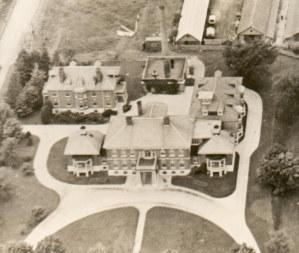
We’re so happy to see the Women’s Institutes featured in Ian McKechnie’s “Just In Time” column in e Advocate. e local Women’s Institutes have been loyal supporters of the Ross Memorial since the Hospital was built in 1902. When the Ross expanded to create the community’s first mater nity ward in 1930, the fundraising efforts were supported by 20 Women’s Institutes in Woodville, Fenelon Falls, Manilla, Bexley, Islay, Omemee, Powles’ Corners, Cameron, Blythe, Pleasant Val ley, Lorneville, Oakwood, Janetville, Haliburton, Norland, Cam bray, Lindsay, Burnt River, West Ops and Coboconk.
e opening of the Victoria Wing on August. 19, 1931 marked a new era of care for women in our community. e Women’s Institutes’ tradition of caring and their commitment to healthy communities has never wavered, and their impact on patient care is felt through every department. We’re very grateful.
—
Kim Coulter, CFRE, Communications Specialist (she/her) Ross Memorial Hospital Foundation
I started The Lindsay Advocate in 2017 to make a positive difference in my hometown. Then last summer, our small, independent team revived an all-local, traditional weekly newspaper — Kawartha Lakes Weekly.
Localjournalismmattersmore thanevernow.Won’tyouhelp usprotectit?
Visit our website and choose Support or contact 705-341-1496 or roderick@ lindsayadvocate.ca.
Thank you to everyone who has chosen to support local journalism.
– Roderick Benns, Publisher

FIRESIDE PUBLISHING HOUSE FAMILY OF MAGAZINES

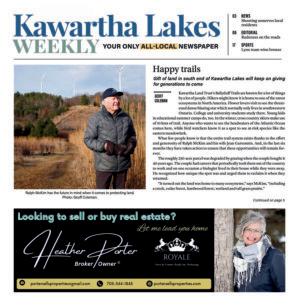



Won’t you join our supporter’s list?
e Advocate and KawarthaLakesWeekly are your 100% local print media choices based in Kawartha Lakes. Visit our website and choose Support Us, or contact 705-341-1496 or roderick@ lindsayadvocate.ca. We thank the following people for their support:
Alan Gregory, Al Kingdon, Anne Melanson, April Scott, Audrey Burrows, Barb Taylor, Bill & Heather Peter, Bob & Carol Barkwell, Bruce & Debbie Peck, Cam Finley, Carol Bryans, Carol & Brian Kelsey, Catherine Hennings, Christine Wilson, Colleen Newson, Cordula Winkelaar, D
Ann Ostafichuk, Dale Urekar, David & Margaret Robertson, David Holloway, David MacMillan, Deborah Smith, Doreen Amos, Don Sangster, Donna Gushue & Jim Buchanan, Drew Davison, Edith Wood, Edna Calhoun, Elaine Heyes, Eileen MacDonald, Elizabeth Anne Patterson, Elke Danziger, Ellen Roberts, Gail Motzok, Garth & Marian Mackay, George Meyer, Glenda Morris, Grace King, Hannah Marnoch, Heather Muir, Hilary Grice, Jack Kyle, Jane Porter, Jane Walling, Janet Smith, Jean Wood, Jeremy Kraemer, Jim Buchanan, Joan Shippel, Joanne Young, John & Pauline Hunter, Joyce Dunning, Kevlyn Given, Laurie Jones, Lauren Drew, Lee Steeves, Leslie King, Linda Friend, Lorna Green, Lynda Palmer, Mike Vanderburg, Marci Stainton, Margaret Anthony, Maria Bennett, Marie Geelen, Marie-France Leclerc, Marnie Nelles, Maureen Kalmykow, Maurice & Marie Jackson, Mehran Qaaboos, Mieke Schipper, Mike & Cathy Puffer, Nanci Byer, Neil Campbell, Nelson Gingrich, Nora Steffler, Norma Downes, Norman & Molly Feldman-Swan, Patti Siegel, Patricia Apac, Pamela Burtt, Paul Skipworth, Peter & Kathy Anderson, Peter & Sandra MacArthur, Ray & Lorna Smith, Ron & Claudie Chartrand, Ross & Susan Beattie, Sandra Scott, Sharon Tracy, Shirley Harnden, Susan Ferguson, Susan Gleeson, Susan Stitt, Tegan Osmond, Vickie Schuett, Viona Smith, Wanda Percival, Wayne & Cathy Alldred, Wayne Alldred, William Steffler, Zita Devan
Don’tmiss thisexhibit before
oncloses April12!


March4–
April12,2025




Barristers, Solicitors, Notaries

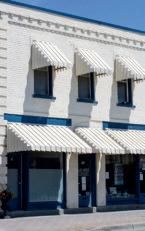







Is this the nation we want to be?
A few weeks ago, the World Happiness Report was released for 2025. Canada continues to slip down the rankings, now positioned 18th in the world. Just 10 years ago, we were in fifth place.
ereasonsaremanyforthedropinthis report, which assesses GDP per capita, healthy life expectancy, freedom, social support, generosity and perceptions of corruption. Sharing a border with the United States doesn’t help, which is also in freefall at number 24, but ultimately, we are a sovereign nation and have the choice to do things differently.
Felix Cheung, a Canada Research Chair in population well-being and assistant professor in the department of psychology at the University of Toronto, was recently interviewed by the CBC. Cheung noted that, “When one person is unhappy, that’s an individual issue. But when a country is unhappy, this is a structural issue.”
Many of us here in Kawartha Lakes are feeling helpless as we look at the fentanyl problem wreaking havoc on our streets. I can’t help but wonder if Iceland’s systematic, organized approach for young people would eventually pay dividends here.
Last month Rebekah and I visited Iceland which, once again, rounds out the top three happiest places on the globe, along with Finland and Denmark. I’ve made no secret of the admiration I have for Nordic societies, which manage to balance the intrinsic benefits of capitalism with thoughtful social policy better thananywhereonearth.Wetalkedwith some of the local people we encountered in Reykjavik, the most northerly capital city in the world, to get a sense of what makes life so great there.
By Roderick Benns Publisher
One 34-year-old man, who had immigrated to Iceland when he was 11, spoke glowingly about his adopted homeland. He pointed out that Icelandic society values a strong work ethic, and the Youth Act emphasizes organized activities with social, preventive, and educational values for young people. ese activities are often managed by municipalities and aim to promote well-being, initiative, and active participation. As well, Iceland’s Ministry of Education and Children has policies supporting leisure and youth work, ensuring access to professional opportunities for personal growth at an early age.
Many of us here in Kawartha Lakes are feeling helpless as we look at the fentanyl problem wreaking havoc on our streets. I can’t help but wonder if Iceland’s systematic, organized approach for young people would eventually pay dividends here. (Incidentally, we didn’t see a single person on the streets of Reykjavik – a city of about 145,000 people – who looked like they were in distress from drug addiction.)
In fact, Iceland is one of the safest nations on the planet, with extremely low crime rates and high levels of trust among residents and towards institutions.
While people we talked with acknowledged Iceland is an expensive place to live, that must be placed in context. e average wage for a full-time working citizen in this Nordic nation is nearly $8,000 a month, in Canadian dollars. And there is no minimum wage in Iceland. Instead, fair wages are determined through collective bargaining agreements between employers and unions, something that is in decline here.
Fair wages. Youth who are supported to find purpose. Is Iceland the Canada that once was? And is it the Canada we can still be?
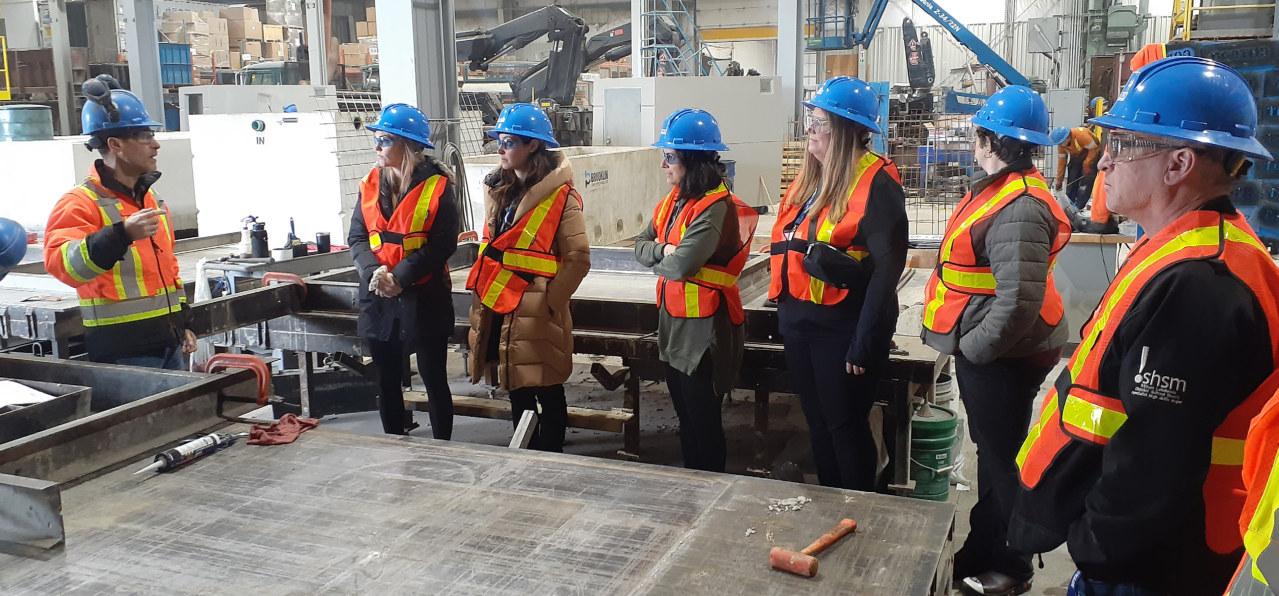

By Deron Hamel
Kawartha Lakes manufacturers and local educators came together recently at an event designed to connect the next generation of workers with employment opportunities in the city.
About 30 people, mostly educators as well as representatives from the city, including Mayor Doug Elmslie, boarded a school bus that travelled to three manufacturing plants – Mariposa Dairy, Brooklin Concrete Products and Armada Automotive – to tour the facilities, meet company representatives, learn about their operations and network during the Manufacturing Doors Open Tour.
e event was hosted by Kawartha Lakes Economic Development, the Workforce Development Board, Trillium Lakelands District School Board, Peterborough, Victoria, Northumberland and Clarington Catholic District School Board and Kawartha Pine Ridge District School Board.
“Events like Manufacturing Doors Open play a vital role in bridging the gap between education and industry, showcasing career pathways and the skills needed for the future
workforce,” said Lindsey Schoenmakers, economic development officer for Kawartha Lakes.
“By connecting students, job seekers and educators with local employers, these events help inspire the next generation of skilled workers while addressing current workforce challenges.”
is was the second Manufacturing Doors Open event; the first was held in 2022.
Alan Stanley, the head of business and technology studies at I.E. Weldon Secondary School, told the Advocate he was attending the event for the second time.
During the first stop at Mariposa Dairy, North America’s leading producer of private-label goat and sheep cheese, Stanley said the most exciting part of the day for him was seeing how “incredible” and “impressive” facilities like this are.
Established in Kawartha Lakes in 1989, Mariposa crafts its award-winning cheese in two facilities covering more than

“I think going into the factories, into the production facilities and seeing their processes, seeing what they do and all the different types of jobs that exist in there, I can speak to my students about what their next steps might be if they’re interested (in working for these companies),” Saunders said.
Saunders also underscored the importance of the networking prospects stemming from Manufacturing Doors Open.
“It’s great to connect with local industry to see what the opportunities are for the kids here, because they need employees and our students need jobs, so making those connections is what we do,” he said.
ere were also educators who were first-time participants at this year’s event, including Kathleen Alfredsson, who teaches physics and mathematics at I.E. Weldon.
Alfredsson noted her husband is a power-line technician and that she’s interested in the trades and wanted to see what local opportunities exist in manufacturing for students entering the job market.
“I try to always bring (employment information) into my classes, and it was a great opportunity to see lots of positions that are available to my students with varying skill sets,” she said.
80,000 square feet.
Following a presentation on the company from Mariposa representatives, Stanley said what inspired him to attend this year’s event was the prospect of finding opportunities to connect students with local industry.
“I (want) to make it my focus to make sure we have an emphasis on the opportunities for our students coming out of high school and moving into the world of work, whether that be post-secondary education or skilled trades,” Stanley said.
Also attending the event for the second time was St. omas Aquinas Catholic Secondary School co-op teacher David Saunders.
Like Stanley, Saunders said Manufacturing Doors Open presents valuable opportunities for educators to connect with local businesses and learn what they have to offer so they can bring that information back to their students and, hopefully, pique their interest in career opportunities in Kawartha Lakes.
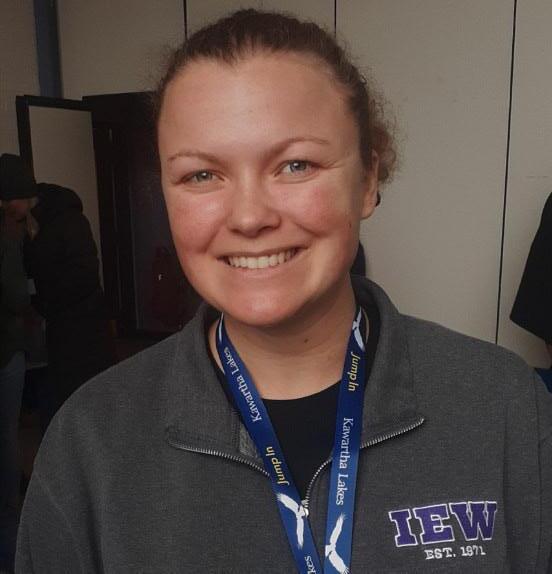
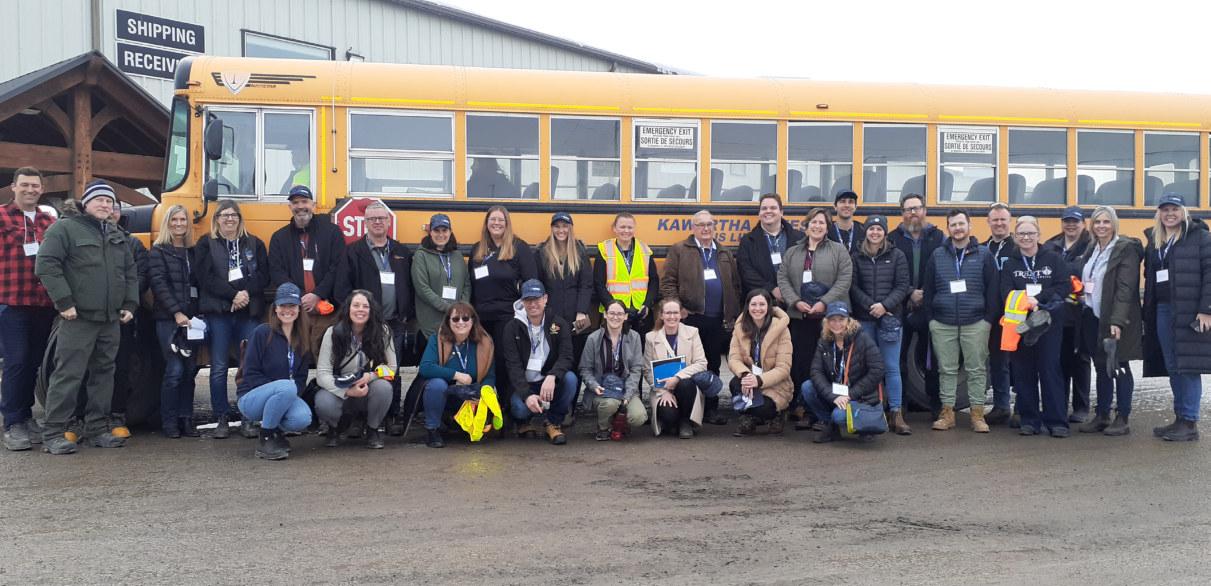
Alfredsson said what excited her most about the event was meeting different employers in Kawartha Lakes who are keen to hire young people as well as gathering information she can relay to her students.
“It has been a fantastic day; I’m really glad that I was able to participate,” she said.
Another stop on the tour was Brooklin Concrete. Established in 1952, Brooklin Concrete is one of Canada’s largest precast concrete manufacturers. e company is a largescale producer of patio slabs and retaining walls as well as precast hydro vaults and septic system products.
Tour participants – including the Advocate – were provided a presentation about the company’s history and products. With everyone wearing hardhats, protective glasses and safety toe covers, guests were guided through the manufacturing facility by operations manager Alain Bou-Daher.
Bou-Daher said events like Manufacturing Doors Open bring “a lot of benefits” to Brooklin Concrete by raising aware-

ness of the company with the generation preparing to enter the workforce.
“We like to see the young people interested in this kind of industry,” he said. “If they show interest in these kinds of manufacturing processes, it’s going to help us hire, train and keep people who can make a career here.”
Bou-Daher added that Brooklin Concrete is a company with strong employee retention and has had employees serve the company for decades.
“ ey are proud of their accomplishment, so it’s a career people can build here,” he said.
e school bus’s final stop was Armada Automotive. Founded as a tool shop in 1972, Armada manufactures automotive assemblies and components for all the major original equipment manufacturers (OEM) and Tier 2 supplies worldwide.
e company has grown to become a leading supplier of custom engineered and plastic moulded automotive components and assemblies for many of the major automotive companies across the globe.
Door handles, cup holders, licence-plate holders and roof vents are some of the many products the company produces.
During the stop at Armada, participants toured the manufacturing facility and learned about the products the company makes.
Richard Hammill, Armada’s human resources manager, said events like Manufacturing Doors Open are important because they help connect Armada to local educators and students to create employment pathways.
“It’s very important because I like to see who’s interested and I like to see who’s out there in the community and who’s looking forward to working in a place like this,” he said. LA
The municipality’s Organics Program grace period is coming to an end on May 1, 2025.
Check out this quick Q&A with Manager of Waste Management, Heather Dzurko:

We’ve had a great start to the program. So far, we’ve stopped over 200 tonnes of food and organic waste from getting to our landfills. A big thank you to those that have already been sorting food/organics from their garbage!
To help the community transition to the new program we’ve been providing a grace period for sorting organics out of garbage bags. The grace period is coming to an end on . When the grace period is over, garbage bags containing more than 10% of food/organic waste will not be collected. If your household isn’t included in the organics program, the grace period does not apply to you.
Participating in the program is easy! Each eligible household has received a small kitchen catcher bin and a larger rollout cart. Fill up your kitchen catcher with food/organic waste, then put it in your rollout cart. Bring your rollout cart to the curb for pickup on Friday mornings. If you need help sorting or if you have any questions about the program, go to our website to learn more: May 1, 2025
www.kawarthalakes.ca/Organics

“Need help sorting? Get the Recycle Coach App! Scan the code with your phone camera to download it today.” - Obbie




e Lindsay Advocate hosted its second annual International Women’s Day event at e Pie Eyed Monk in Lindsay last month, with special guest speaker Camille Williams-Taylor.
e director of education for the Durham District School Board was well-received by the soldout crowd, with her focus on leadership, taking chances, and lifting each other up.
All photos: Sienna Frost.
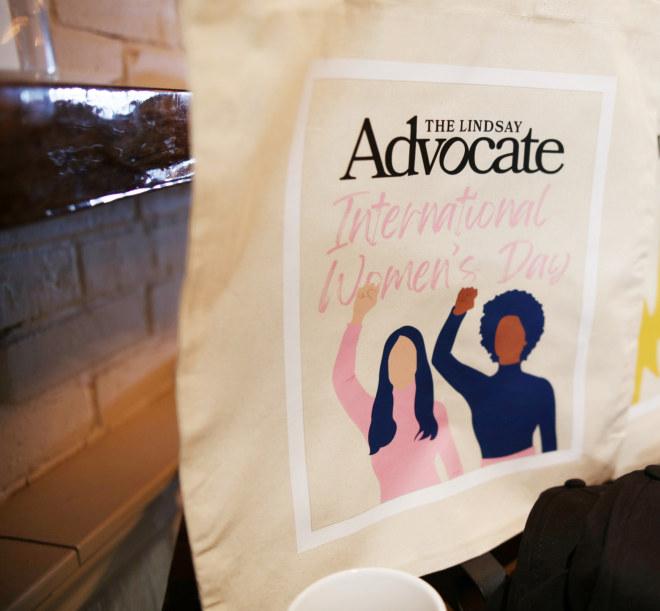

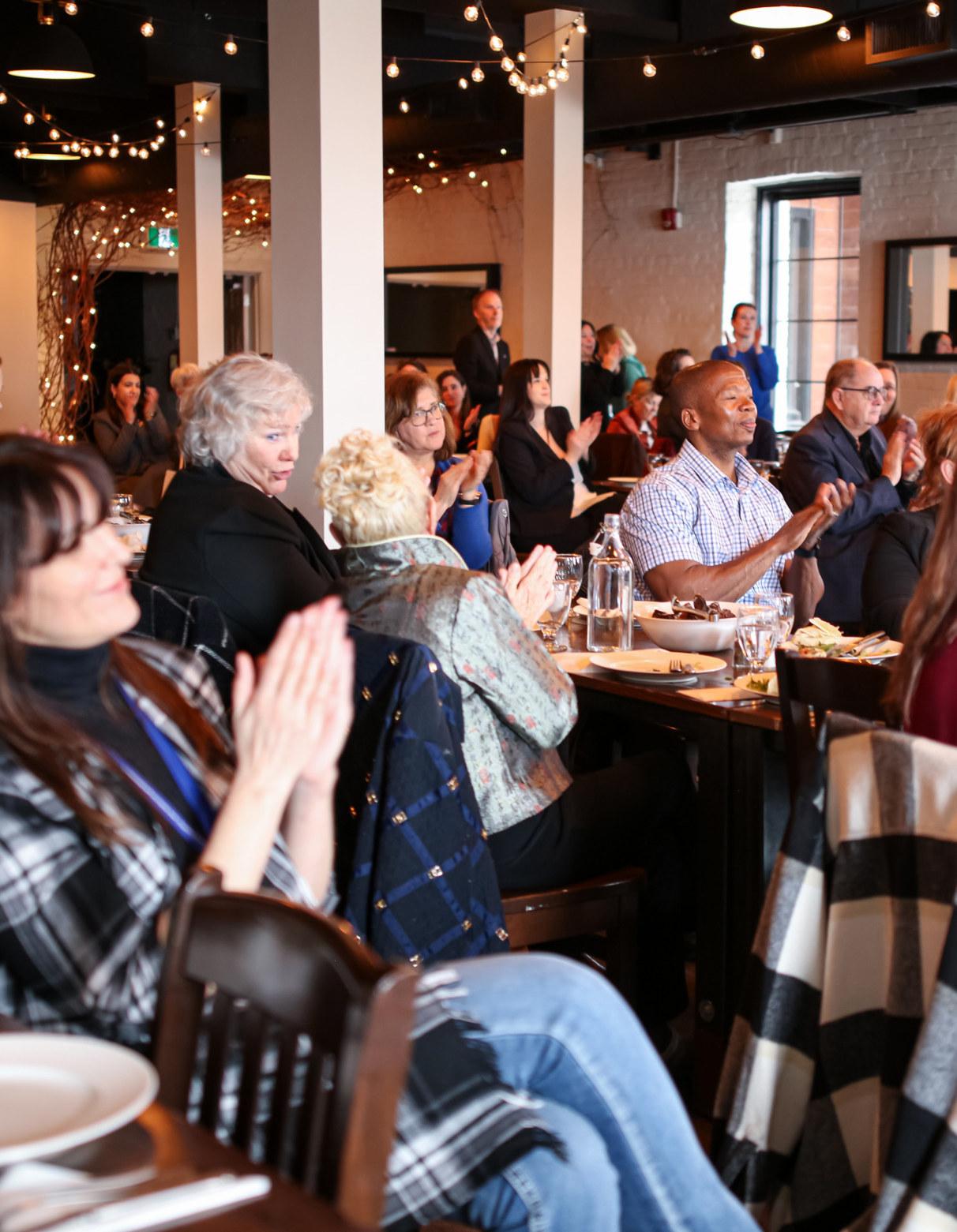


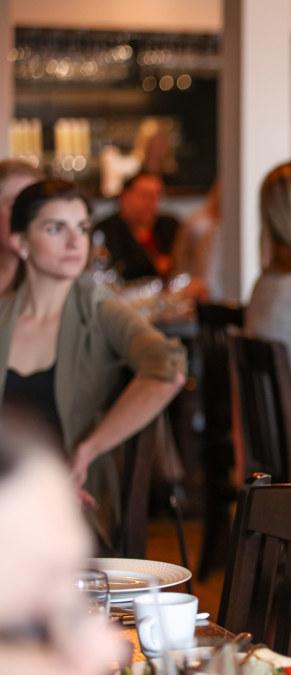
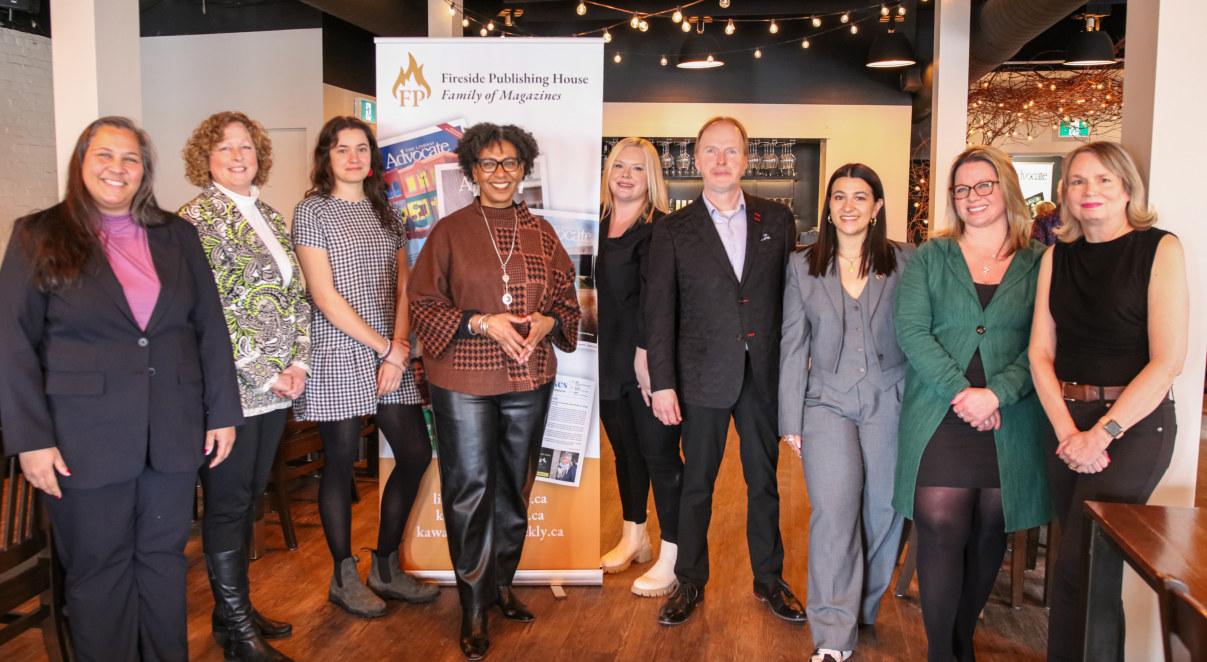
e Advocate’s Trent University student, Jackie Cooke, Nancy Payne, writer-at-large, Christina Dedes, graphic designer, Camille Williams-Taylor, guest speaker, Robyn Barton, graphic designer, Roderick Benns, publisher, Aliyah Mansur, writer-at-large, Rebekah McCracken, editor, and Denise Waldron, writer-at-large.



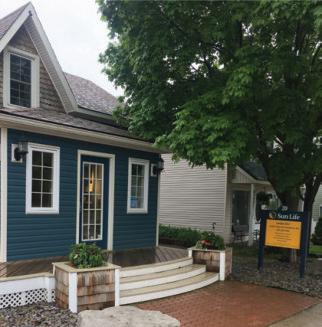
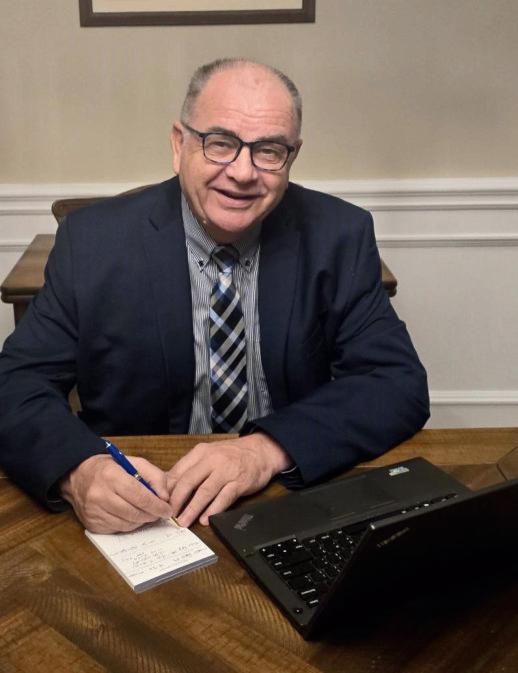




At WARDS LAWYERSPC, we recognize the emotional and mental toll that legal challenges can bring. That’s why we are committed to delivering tailored legal solutions, helping our clients navigate difficult times with confidence and clarity.

By Aliyah Mansur Contributor





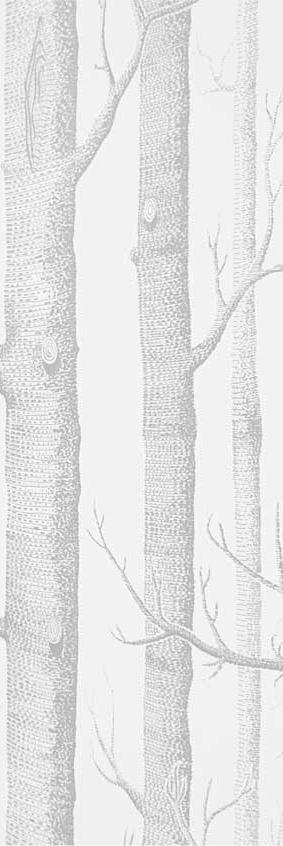






A truly fickle funny beast. Something we’re often terrified of. e fear of it is grilled into us.
To fail is to try. To fail is to learn. Experiment. Failure presents an opportunity to reexamine, go back to the drawing board, and figure out if we want to try again or take a new path. Ironically, after failure there is no wrong answer. Each stumble becomes a stepping stone, a chance to reevaluate. A moment to pause and ask: Was this the direction I really wanted to go?
I’ve failed plenty of times but I have been a coward and not faced it head on as many times. When I caught a whiff that I might be failing a course in university I would drop it before I could fail. It kept my GPA neat and tidy but it also meant I failed to finish my degree “on time.” ere was no true avoidance of failure, it would all come out in the wash. Delayed or disguised, failure became an unwitting friend.
Failure will always find us. And what an exciting prospect that is because to fail is also to live. It is a sign that we have reached and stretched into a realm beyond our comfort. Beyond the familiar, where growth takes root. e soil of failure may be rocky, but it’s fertile ground for reinvention.
Writing for a newspaper or magazine is great for acclimatizing to failure, because if you make a mistake (pretty much inevitable), even if an innocuous typo slips through, you have to accept it. Print is an unforgivable medium that way. Your failures are laid bare for all to see, but as quickly as they come, they are gone. You’ve moved onto next week’s issue before you even get to see your error in print. It’s liberating, in a
strange way – your imperfections archived, but quickly forgotten, forcing you to focus forward.
Today, I still pant and preen at success, the kind that’s determined and bestowed by others. It’s not a sustainable kind of success because it depends on others too much to validate. Leaving a feeling of hunger for more, an insatiability that’s often more destructive than anything. One day, my own success will be determined by my own measurements. For now, I try to open my arms to failure.
ere was no true avoidance of failure, it would all come out in the wash. Delayed or disguised, failure became an unwitting friend.
A few weeks ago, I succeeded at something. I got accepted to a university in New York City for journalism. Last year at this same time, I had failed to get into Oxford for a different master’s program. e failure of yesteryear made possible the success of today. In the moment it can be hard to see, but with time and exposure to more failure, the trust in cheesy sayings like “when one door closes, another opens” gets stronger. Life is full of unopened doors and untravelled paths, many of which only reveal themselves when we stop fearing failure and start embracing what it grows in its wake.















‘Any tariff on incoming or exporting material will directly affect the bottom line…’
By Deron Hamel


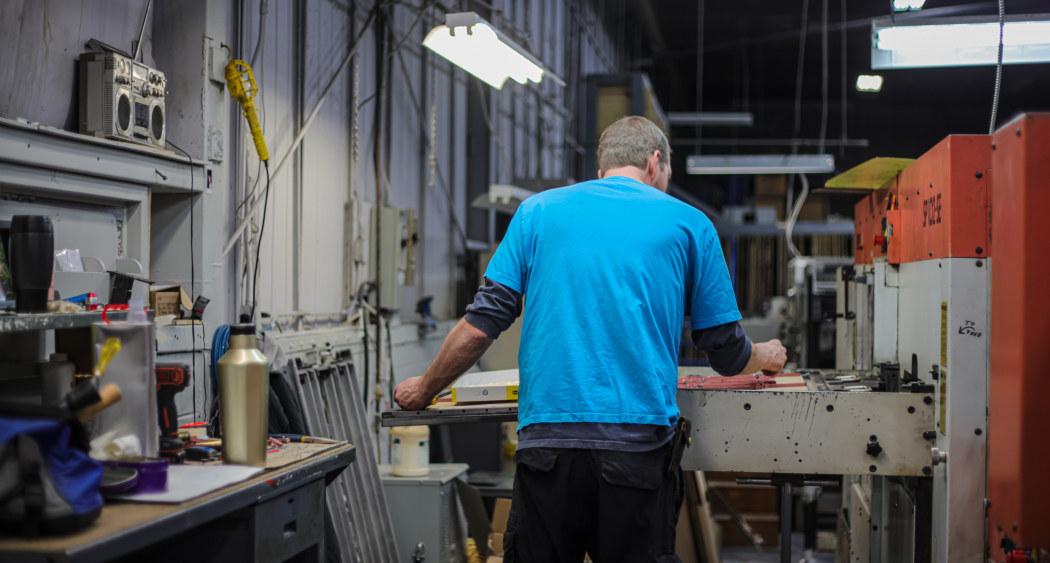
People from the Kawartha Lakes business community say the Canada-U.S. trade war is creating waves of uncertainty for their companies which have longstanding relationships with clientele south of the border.
On Feb. 1, U.S. President Donald Trump signed orders imposing 25 per cent tariffs on nearly all imports entering the U.S. from Canada and Mexico, launching the trade war. en-Canadian Prime Minister Justin Trudeau responded with 25 per cent tariffs on U.S. exports to Canada.
Businesses say they’re feeling the pinch and are concerned about the future of their relationships with customers in the U.S.
Ideal Roofing is headquartered in Ottawa and has a manufacturing facility in that city, as well as facilities in Brampton and Moncton, N.B. e family-owned business, which manufactures metal roofing and siding, has clients in Kawartha Lakes. It was founded 96 years ago.
Tariffs on U.S. imports of steel and aluminum from Canada and other countries went into effect March 12. is has a significant impact on a company specializing in metal roofing, said Ideal Roofing product specialist Brad Whitley.
Whitley, who is based in Kawartha Lakes, said about 25 per cent of the company’s business is in the U.S. e company has been selling products there for about 60 years.
“Being a nearly-100-year-old, fourth-generation company, there have been a lot of relationships established and maintained, and this really affects that,” Whitley told e Lindsay Advocate.
Whitley added that the trade war will likely mean Ideal Roofing will be forced to focus on increasing business on the northern side of the border.
“Clearly, we’re going to have to concentrate more in Canada,” he said.
e U.S. imports more steel from Canada than any other country. In 2024, there were six million tonnes of steel imported by the U.S. from Canada, according to the U.S. Department of Commerce.
Philippe Laplante is vice president of sales and marketing for Ideal Roofing. On Feb. 25, two weeks before 25 per cent tariffs on most imports to the U.S., including steel and aluminum, went into effect, Laplante was interviewed on the 580 CFRA radio show Ottawa Now with Kristy Cameron. Laplante expressed concern on the show about the impact the trade war could have on the company, noting the uncertainty surrounding tariffs was already creating rough waters to navigate.
“It has been tough; the U.S. market has seen a lot of increases due to this, so the products themselves are rapidly going up (in price) in the U.S. because of the uncertainty and because of these possible tariffs,” he said.
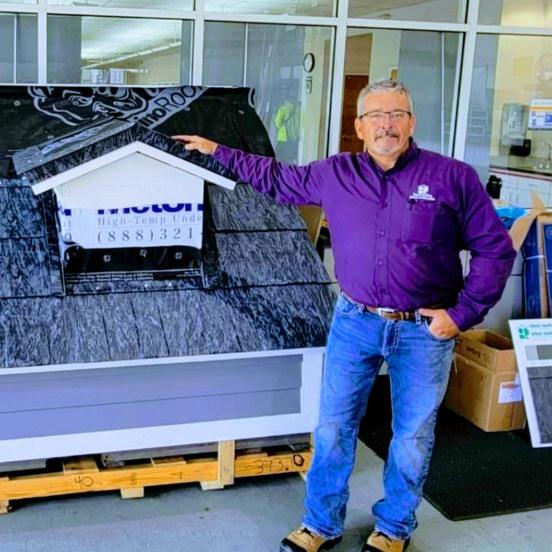
Laplante added that the company’s February sales were “greatly impacted” by this uncertainty.
“Uncertainty is never good for any business,” he said. e Lindsay Paper Box Co. was established in Lindsay in 1951. e company manufactures custom folding cartons as well as blister and skin packaging for clients across North America.
Company owner Greg Fierheller said Lindsay Paper Box exports approximately 35 per cent of its products to the States. He said the company is “very concerned” about the impact of 25 per cent tariffs on its U.S. exports.
“(Tariffs) directly affect our competitive ability and jeopardize the decades-long relationships we have cultivated with our U.S. clients,” Fierheller said.
“Any tariff on incoming or exporting material will directly affect the bottom line for our local clients and our entire customer base.”
Given that the trade war is in its infancy, Fierheller said there’s a lot of uncertainty surrounding what its long-term impact will be. However, at the moment, he said the best option for Lindsay Paper Box to mitigate the negative impact of tariffs is to continue utilizing its Canadian suppliers as much as possible and persist in expanding working its Canadian customer base.
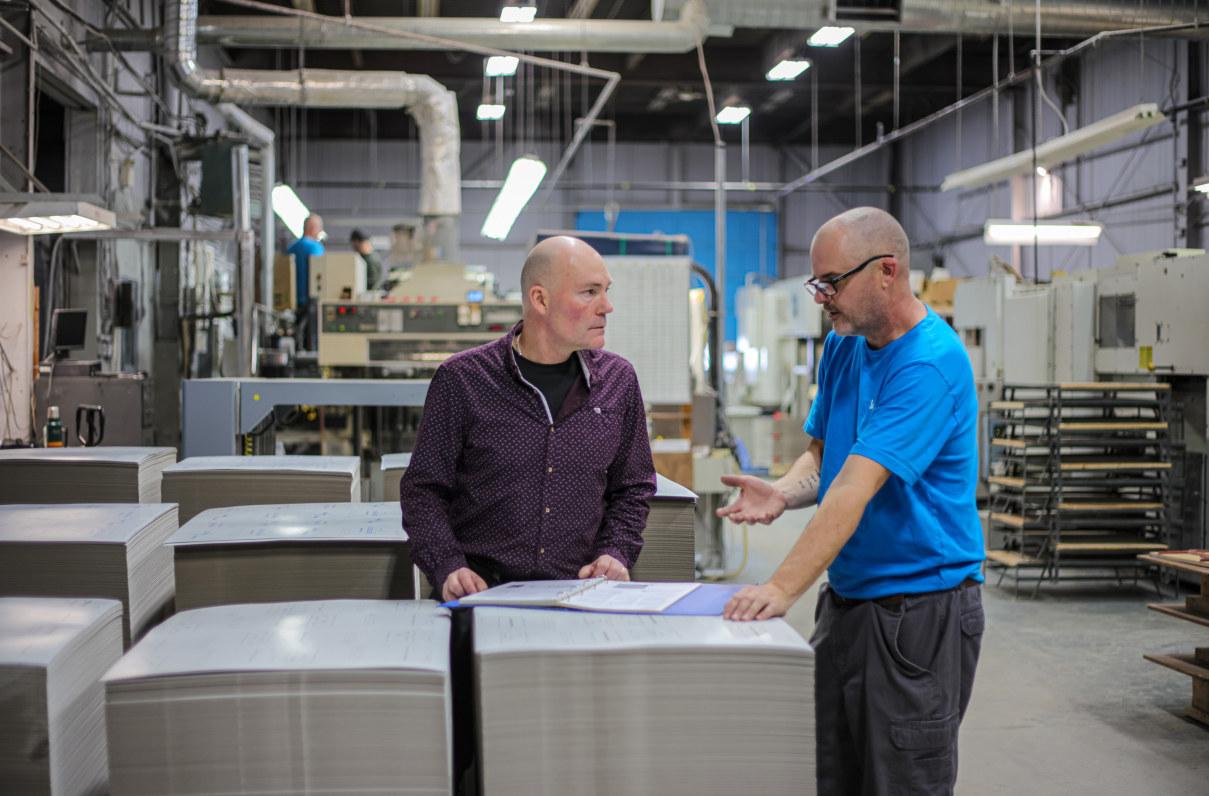
Looking ahead, Fierheller said he hopes the U.S. will abide by the United States-Mexico-Canada Agreement (USMCA), but he adds he’s skeptical, given Trump’s mercurial approach to trade with America’s neighbours since starting his second presidential term in January.
“At this point, it does not seem as though there is willingness to adhere to a trade agreement that is formally agreed to and in place,” Fierheller said.
In an effort to help Ontario manufacturers wade through the effects of the trade war, the province is offering two programs to manufacturers: the Ontario Made Manufacturing Investment Tax Credit and Ontario Made.
e Ontario Made Manufacturing Investment Tax Credit is a 10 per cent refundable corporate income tax credit to help eligible companies receive a tax credit of up to $2 million per year to make qualifying investments in buildings, machinery and equipment for manufacturing or processing.
Ontario Made is an initiative that provides free marketing materials to help businesses in the province highlight locally manufactured goods.
At the federal level, the Canadian government is stepping in to help manufacturers that export to the U.S. e feds announced March 7 that Canada will be launching the Trade Impact Program through Export Development Canada (EDC). is initiative will deploy $5 billion during the next two years to help exporters find new markets and deal with challenges.
“In these uncertain times, supporting Canadian exporters is not just a policy, it’s a necessity,” said Mary Ng, minister of export promotion, international trade and economic development, in a statement.
“ is investment ensures our exporters can continue to drive our economy, create jobs, and compete on the world stage.” LA
By Lindsey Schoenmakers, Economic Development officer for Kawartha Lakes
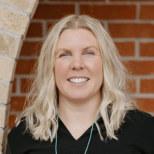
In the face of ongoing economic shifts— such as supply chain disruptions, evolving consumer demands, and the uncertainty of tariffs—manufacturers in Kawartha Lakes are seizing opportunities to boost their global competitiveness.
Challenges have spurred innovation, strengthened resilience, and refocused efforts on bolstering local manufacturing capabilities. Rising costs are driving businesses to adopt more strategic approaches in sourcing materials, managing expenses. ey are also focusing on expanding their customer base, entering diverse markets, and maintaining their competitive edge.
“Tariffs will introduce significant challenges. Our investments in local talent and specialized capabilities have bolstered our resilience, ensuring we are well-prepared for future uncertainties,” says James Bogar, Cameron Steel owner and president.
Despite these challenges, the manufacturing sector in Kawartha Lakes remains a cornerstone of the local economy, fueling employment and driving innovation.
With continued support and a forward-thinking mindset, businesses are encouraged to continue to diversify, embrace cutting-edge technologies, and source inputs closer to home whenever possible. Many have used these challenges as a catalyst to reduce their reliance on international suppliers and to strengthen local and domestic partnerships.
When tariff threats began, Dan Kitchen, owner of Make Stuff Move and Kawartha Manufacturers Association board member, noticed local collaboration right away.
“Immediately, our manufacturing network began sharing insights, supporting local suppliers, and working together to solve challenges,” says Kitchen. “It’s what makes Kawartha Lakes so great to do business in.”
All levels of government, industry organizations, and community partners are coming together to support the manufacturing sector—fostering collaboration, providing resources, and strengthening businesses. is local and Canada-wide collective effort enables businesses to adapt with confidence.
Several support programs are available to help businesses invest in technology, workforce development, and supply chain diversification. For additional information on export support and trade resources, visit kawarthalakes.ca/tariffsupport. LA
Kindred Cafe in downtown Lindsay is growing again. After just opening a Bobcaygeon location months ago, owners Victoria Jessup and Dara Bergeron recently announced they will soon take over the empty corner retail space at Kent and Cambridge Streets. e spot became available when Olde Mill Home announced it was closing. On Kindred’s Instagram page they said it will happen just in time for the busy patio season, noting that “more seating is on the way for our ever-growing community.”
Mark your calendars! Running from April 25-27 at the Fenelon Falls Community Centre, the 39th annual Country Living Show is set to break last year’s record success. Featuring more than 100 booths, with products and services all geared toward running and styling your country home, farm, or cottage. eCountryLivingShowisthekick-offevent of the summer season in Fenelon Falls, with last year’s show attracting more than 3,300 attendees.
An RBC economic update event will be held April 7 at the Launch Kawartha hub space on Kent and Cambridge in Lindsay. e event will feature presentations on the current state of the economy, guidance and tips for navigating global trade, and the Canadian succession and estate planning landscape for business owners. Speakers include economist Rachel Battaglia from RBC, EDC’s Nina Garcia, and tax specialist Kaz Nesbit from Doane Grant ornton. Doors open at Noon with presentations from 12:30 p.m. to 2 p.m. and light refreshments will be provided. ere will be opportunities for networking both before and for a short time after the event, where guests can interact with the speakers. Launch Kawartha is on the top floor of the Scotia building.

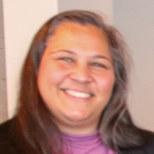
As a Trent Durham University student pursuing my Business Administration degree and specializing in communications, I’m not your typical student. I am a 46-year-old mother, wife, and full-time professional who returned to university to pursue a lifelong dream.
Returning to school in 2022 was a decision that I knew would come with sacrifices by my family and me, yet working full time with three courses a semester has been a wild ride that I often recommend to others. I was eager to make myself vulnerable and experience new aspects of the communications field. is interest led me to the position of communications assistant with Fireside Publishing House. As an intern for the past four months, I have learned much about print media and engaged with the wonderful community of Kawartha Lakes.
My task this semester was to determine who the readership is of e Lindsay Advocate. We met, discussed the opportunity and agreed this was a great match. As a communications assistant, I was motivated and invested in learning as much as possible in a new environment.
I began by understanding Kawartha Lakes, the various villages and the dozens of places where the magazine is available. Next, in conjunction with team input, I determined the best survey questions to learn about our readership. e survey needed to be accessible and incentivized to engage our community. We wanted feedback, comments and demographic information to allow us to meet the needs and interests of the readers of the city.
By Jacqueline Cooke
We published our survey in the Advocate magazine and posted a QR code in various locations. I was fortunate to visit Omemee, Bobcaygeon, Fenelon Falls and Lindsay within a few weeks. I met with many of our readers at the libraries, laundromats, Service Ontario offices and some of you were kind enough to talk in parking lots and on the street. Getting to know many of you in person made me feel connected to Kawartha Lakes and made it clear to me how much you cared about the community.
ank you for submitting your surveys online, mailing them to us, and for those who filled them out in person. We have enjoyed everyone’s feedback and suggestions to understand our readers better.
ank you to Fireside Publishing for offering this opportunity to support my education and to learn about publishing and community development. I was proud to contribute to the community, as well as the Kawartha Lakes Weekly newspaper, e Lindsay Advocate magazine and participate in local events.
To Kawartha Lakes, I encourage you to support co-ops and internships from local universities. Working with organizations for the semester teaches us skills and allows us to gain experience while supporting your organizational needs. You might get lucky and have someone join you with prior work experience, a great personality and a new love for Kawartha Lakes.
I look forward to the summer events and will be back soon for camping.













Downsizing is a significant decision - one that’s often rooted in both practical needs and deep emotions. For many, the idea of selling their loved home, packed with years of memories and belongings, can feel overwhelming. Inspired by my own journey, I developed The Mindful Move Method, a compassionate, step-by-step system designed to support clients through the challenges of downsizing. The process is designed to support you in the areas you feel most ‘stuck’ and is tailored to your unique needs.
If you're considering downsizing but don't know where to start, connect with me to schedule your free consultation and see how The Mindful Move Method can help! It's never too early to start a plan.


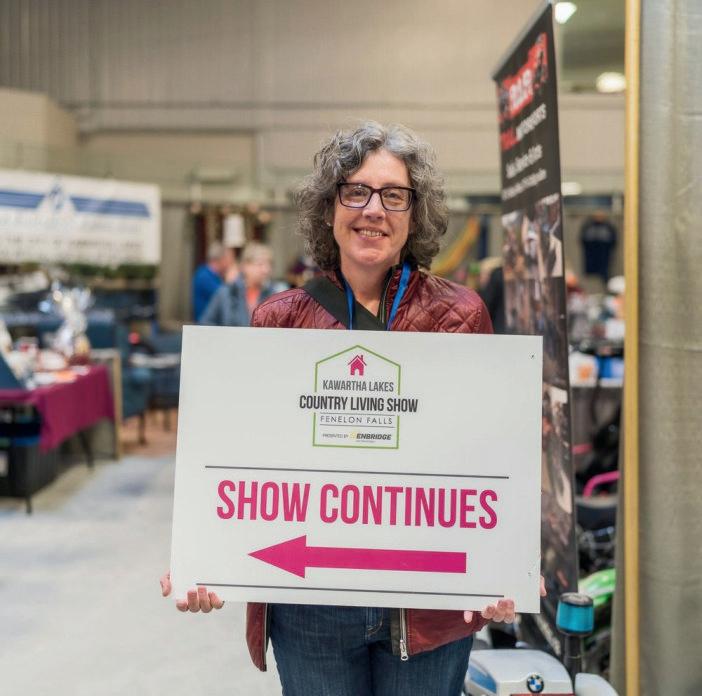
By Ian McKechnie

e local history genre is one with which many residents of Kawartha Lakes are familiar. anks to scores of books, articles, and museum exhibits – not to mention good old-fashioned oral histories – the stories that have shaped and continue to shape our community keep being told and retold.
Count Lindsay’s Pencho Rabgey among the most enthusiastic students of local history – not simply of his adopted community in which he has resided for more than half a century, but of the region in Tibet from which he hails. So committed is Rabgey to sharing his stories with others that he wrote a book of personal reflections, chronicling his life journey in the context of the local history of his homeland in the mountains of eastern Tibet.
Originally published in the Tibetan language by the Library of Tibetan Works and Archives in Dharamasala, India, the book is now being edited and translated into English by his daughter, Tashi Rabgey, and will be released later this year as Roaring Mountains: A Tibetan Journey of Faith and Renewal.
Not unlike local histories published over the years in Kawartha Lakes, Roaring Mountains has its origins in an archive –in this case, books of stories kept in a Tibetan monastery. “ ese books document the local history of the Chungba community,” he explains. As a monk, Rabgey read through this repository of stories aloud while a scribe copied everything down. e books, available only locally, were sadly destroyed during the Cultural Revolution.
e result is a collection of tales about the history of Chungba and its monastery and includes stories from Rabgey’s own life throughout. And, as many local residents are aware, that story is one of personal sacrifice. Rabgey left his homeland in 1959 as part of the Dalai Lama’s bodyguard following the Tibetan uprising and in due course made his way to Canada, arriving as a refugee in 1971. He and his family arrived in Lindsay a few years later. In the ensuing decades, he has become best known for his work in establishing the Chungba Primary School, which welcomed its first students in 2002.
Looking back over his nearly 90 years, Rabgey is humble about what he has done to help build a stronger future for Tibet. “I have done many things – some by choice, some by circumstance,” he says.
How circumstances paved the way for Rabgey’s remarkable journey is woven deeply into the narrative of Roaring Mountains. Asked how he hopes this mixture of local history and personal story will resonate with readers (particularly those who are unfamiliar with the rich tapestry of Tibetan culture and heritage), Rabgey says, “I hope that, by reading it, young people will feel motivated to know and record their own local histories here in Lindsay, too.”
Beginning with the local (whether in Tibet or in Lindsay), Rabgey also hopes that readers of his book might feel more personally and deeply connected to the global community – and thus go forth and become the change-makers the world needs.
Pencho Rabgey will read from his book (with translation) at the 18th annual Machik Lindsay Dinner on Saturday May 10, 2025. Tickets are available via info@machik.org.
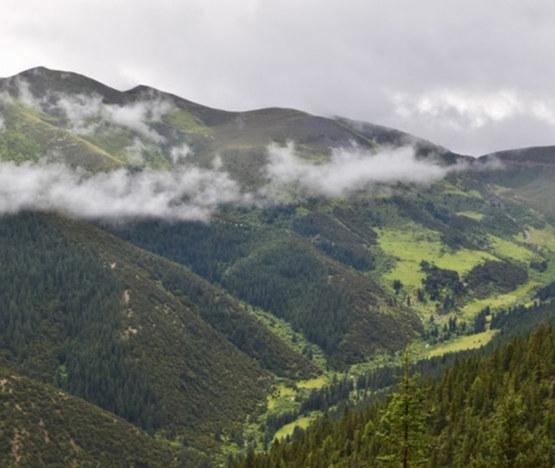
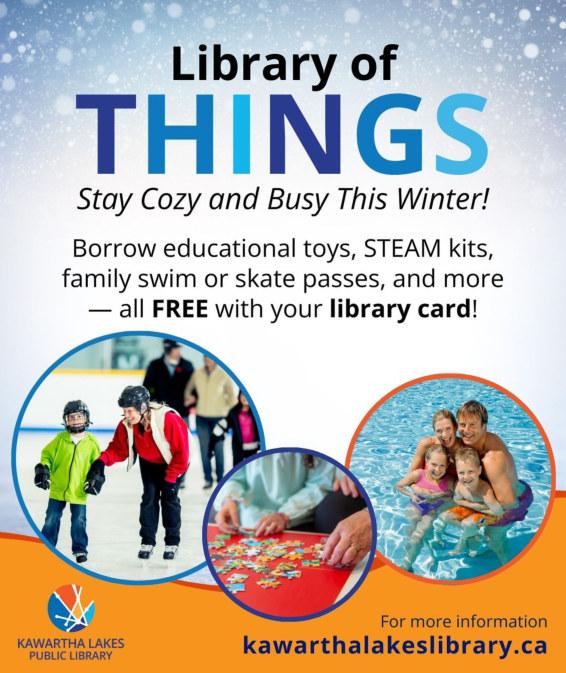


Did you know that using the library is an easy way to help the planet? Instead of buying your books, movies, and toys, the library encourages sharing, reducing waste and making the most of our resources. By borrowing instead of buying, we help cut down on unnecessary production and packaging, keeping items in use for longer and reducing landfill waste.
Beyond books, we also offer our Library of ings collection, where you can borrow sports equipment, toys, and more! Whether you are planning a fun family activity, exploring a new hobby, or borrowing an item for a single use, our collection allows you to save money while making sustainable choices more accessible. is Earth Day, we invite you to explore the many ways the library promotes sustainability, from offering digital books and audiobooks to hosting craft workshops that repurpose materials. By choosing to borrow, share, and reduce waste, you contribute to a more sustainable future. Small actions can have a significant impact on our planet, and together, we can make a difference.


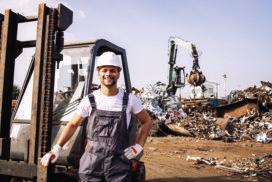


Visit one of our library branches on Saturday, April 19, 2025, from 10:30am to 1:30pm and take part in a special Earth Day recycled crafts event. Unleash your creativity by transforming leftover craft supplies into something extraordinary. Using a unique mix of materials provided, participants can create new and imaginative projects while embracing the spirit of reuse and sustainability.
Play Earth Day Bingo! Follow our social media for a digital version, or visit any branch to pick up a bingo card starting Saturday, April 12, 2025. Complete eco-friendly activities for a fun and meaningful way to honour the planet!
Therapy appt.
Mulroney or Leno protrusion
Delivered the valedictory, e.g.
Sounds of silence?
Actor Ralph of "The Waltons"
"___ Side of the Moon" (Pink Floyd album)
Triage worker's duty?
"Lay off!"
Layers in a coop 66 Marching insects
67 Part of CAA: Abbr.
Sea, for Jacques Cousteau
"I'll take that as ___"
Olay product, e.g.
"Yuk!"-inducing
5 "It's ___ game!" ("We're headed to O.T.!") 6 Lion lover's expeditions 7 Opiner's opening 8 Slaps the cuffs on
Tattoo dedicatee, maybe 10 Disapproving clucks 11 No-brainer? 12 English Channel harbour town 13 Word with tube or ear 18 Cpls. and sgts.
19 "... unto us ___ is given" (Isaiah 9:6) 22 Go-nowhere employment 23 Old Olds Cutlass 27 LCD monitor's lack 28 Avail oneself of 29 Rough amt.
32 Betrayal, as the deception of Christ
33 Powerless sect in Ontario?
Walks in water
Beyond help in the E.R.
Capek play about robots
Suffix with meth- or prop-
Enters daintily, as a butterfly 43 Most flexible, as a ballerina 44 Los ___ Kings 46 Outlandish outfits 47 German/Polish border river 48 Write computer language 49 "Close your eyes and make ___"
50 "Inferno" author 51 Grey Poupon mustard type
56 ___ fool (goof off)
57 GPS info
59 Singer Sumac from Peru
60 Ear: Prefix
61 Home of the Mets or the Met, initially










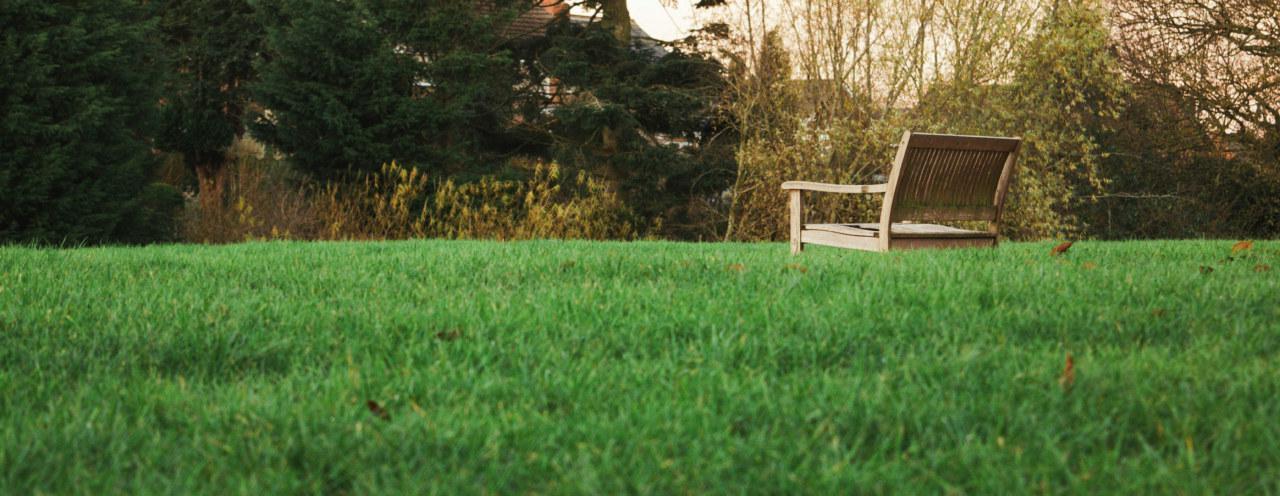

Ah – a lush, green expanse of lawn. Something many aspire to. My much-loved and dearly- departed in-laws worked hard on the huge lawn on their farm. ey had at least an acre to cut. And fertilize.
Nitrogen-based fertilizers used around our homes are also used in industrial agriculture. Right now, without them, it would be hard to feed the eight billion souls that share our planet.
Most of those fertilizers are manufactured using a process developed in Germany more than a 100 years ago. It captures nitrogen from the air and turns it into ammonia – a main ingredient in agricultural fertilizer. at’s all good except for one thing: e process uses a lot of natural gas. So much, that producing one tonne of ammonia releases three tonnes of carbon dioxide pollution. If this industrial method were a country, it would be the world’s eighth largest emitter.
What’s more, when nitrogen fertilizers are applied to soils, they can release nitrous oxide, a gas that’s up to 300 times more polluting than carbon dioxide.
Over-applying these fertilizers creates other problems. ey can burn the lawn, and contribute to water and air quality issues. According to the U.S. Environmental Protection Agency, “excess nitrogen has contributed to acid rain, polluted drinking water, and caused oxygen depletion and ‘dead zones’ in water bodies.” at hurts fish and other aquatic life.
Over time, evidence shows they can deplete soil health. On the other hand, organic fertilizers get higher marks for boosting micro-nutrients in soil.
For many reasons, we should probably use synthetic nitrogen fertilizers sparingly, and only when necessary. Producing food is necessary. But only beasts like cows and goats consider grass food. Maybe it’s time to rethink how we feed
our lawns. After all, they’re the largest non-food crop in the country.
e good news: We control how we manage our lawns, and there are alternatives to chemical fertilizers. If you see “ammonium nitrate” or “urea” listed, you’re likely looking at a chemical fertilizer. Organic fertilizers use natural sources like aged manure, compost, or blood meal.
e three numbers on a fertilizer package, for instance 244-12, show the ratio of nitrogen to phosphorous and potassium. A high first number means high nitrogen – likely synthetically produced. A lower first number like 5-7-6, could be an organic fertilizer.
ere are trade-offs. Chemical fertilizers give a quicker hit to the lawn, for rapid growth. Some critics say that fast growth can come at the expense of a shallower root system, making the lawn less drought resistant. ere are slow-release varieties available.
Organic fertilizers feed soil microbes first, and they in turn feed the plant – a slower process with benefits over time. Healthy soil retains moisture, holds onto nutrients and resists erosion.
Tips I’ve gleaned from those who promote organic lawn care:
• Seed the lawn with fescue mixes. ey’re slow growing, require less watering, and less fertilizer.
• Leave the grass clippings. ey provide mulch to keep moisture in the soil and recycle nutrients as they biodegrade.
• Consider aerating the lawn to provide more oxygen to the roots.
• Top dress with compost and consider overseeding with white clover. It fixes nitrogen in the soil.
Without fast-release chemical fertilizers, grass will grow more slowly – which means less cutting, less pollution from the gas lawn mower. And more time to enjoy your yard. LA
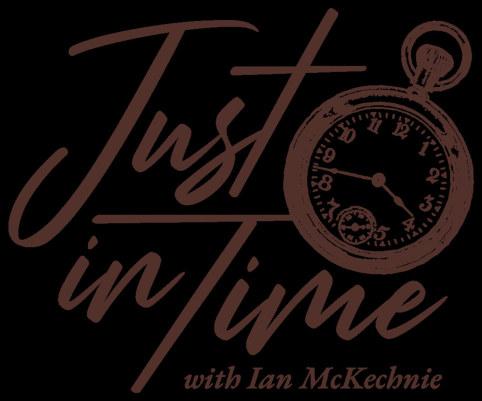

e audible, repetitious clicking of typewriter keys echoes across the office one warm spring afternoon. e bespectacled young woman behind the cumbersome-looking contraption – emblazoned with the name Underwood – has just returned to her desk from a late lunch and is engaged in a fruitless battle with one particular key on the machine that just will not cooperate.
Oh well. e matter will have to wait, as the jangling cacophony of a telephone soon demands the young woman’s attention. And once the receiver has been replaced in its cradle, there will be other tasks to do: transcribing a speech, checking attendance, or making sure that vital records are kept up to date – all depending on what sort of office this young woman is employed in. She returns to the old typewriter and once more attempts to coax something out of the cantankerous key beneath her forefinger. Success! And with that, she removes a sheet of paper from the machine, files it away, and moves on to the multitude of other duties so necessary to the efficient functioning of the office.
Such a scene was familiar to those stenographers, secretaries, and receptionists who throughout our community have played a vital role in keeping a multitude of businesses and institutions operating smoothly – and each year on
the last Wednesday of April, they are recognized across Canada for their tireless work through Administrative Professionals Day.
Many of these women were semi-autonomous, at least in local reportage of their careers. A Miss Stephenson – her first name goes unmentioned – was honoured by her colleagues on Jan. 23, 1904, for the contributions she had made as a stenographer and typist at the Lindsay offices of the Rathbun Lumber Co. over the preceding three years. After some brief remarks bidding her farewell, management presented Miss Stephenson with a clock and an ornament – as well as “a sum of money to help defray the expenses of her new position.” What that new position was is not known, but presumably it promised better pay than that of her role at the Rathbun Co.
Promotions within the ranks of Lindsay’s secretaries and stenographers rarely went unrecognized in the local press.
“Miss Velma Tompkins, who has been stenographer and bookkeeper with Mr. A.J. Campbell, representative of the Manufacturers’ Life Insurance Company for eight years, and for the past year with Mr. Campbell and Mr. Jesse Bradford, has been promoted to the Central Ontario office at Peterboro,” noted the March 9, 1927, edition of the Lindsay Daily Post. Miss Tompkins was succeeded in A.J. Campbell’s office by Miss Marcelle Armstrong.
Generations of these administrative professionals were trained in Lindsay at Mary Baker’s Business College. Situated in the upper floors of the Baker Block on the northeast corner of Cambridge and Kent Streets, this institution was known far and wide for turning out skilled typists.

Excellent typing skills were part of any stenographer’s job description. is Fox typewriter was purchased in 1904 for use in the Town Clerk’s office, and now resides in the Kawartha Lakes Artifact Collection.

By the late 1920s, its graduates were being hired as secretaries and stenographers in such diverse places as the American Consulate office, the Canadian Medical Association office, and Eaton’s mail order department (all in Toronto), as well as at local firms, such as the Lindsay Metropolitan Insurance Co. and Flavelle’s, Ltd.
Outside of the business world, secretaries were bestknown for their work in churches, clinics, law offices, and schools. For many a schoolchild, the secretary was the first person they saw upon entering the building where they would spend the next eight to 10 years.
Marilyn Felhaber spent 35 years at the secretary’s desk, working at Lindsay Collegiate and Vocational Institute from 1970 though 1987, when she transferred to Ops Elementary School (subsequently rechristened as Jack Callaghan Public School in 1994). Her career spanned a technological revolution that made the work of administrative professionals much easier.
“As a secretary back then all record keeping was done manually,” Felhaber says. Other duties included issuing daily admit slips to late students, recording attendance, as well as tending to students’ needs. In a large institution like LCVI, responsibilities were divided up among the secretarial staff. “Guidance department secretaries focused
on course selections as well as student registration and withdrawals, while in the basement two girls dealt with the printing needs using the Gestetner machine,” Felhaber explains. ese secretaries were also responsible for the purchase of school supplies.
By the 1980s, computers had been installed where the venerable old typewriters had once clattered away. “ e introduction of the computer came with a huge challenge for those whose education had focused on times tables and proper spelling,” Felhaber remembers. “We went to night school, attended in-house training sessions, and participated in any tutorials that were offered. is continued as new programs were added.” Banking was streamlined, because computers eliminated the huge ledgers once a staple of many school offices. Computers also transformed how secretaries went about purchasing and distributing supplies, printing report cards, and creating school schedules.
Technology may have changed the way secretaries carry out their responsibilities – but what hasn’t changed is the need for a warm and welcoming face in the front office. “I have met so many wonderful students, parents, and staff,” says Felhaber, looking back on a career that wrapped up in 2005. “And I am very happy to hear stories from students who are living life with careers of their own.” LA

By Trevor Hutchinson Contributing Editor
In the Irish traditional “Johnny I Hardly Knew Ye”, the narrator sings of her war-returned lover, “Where are the eyes that looked so mild, when my poor heart you first beguiled?”
I don’t know why, but that oft-covered song has me thinking about the old carbon tax. I rarely get sentimental about a tax, but here we are.
See, I have been thinking about the carbon tax in some way or another for several years. Back in my misguided Birkenstock and hacky sack days, the carbon tax was an idea from market-based, conservative economists. Right wing economists like Milton Friedman and writers like William F. Buckly supported the idea of a pollution tax. Sceptical of big governments guided by elite technocrats, they supported a free market fix to the “negative externality” of pollution by some form of tax. To a young person who had temporarily swayed from his centrist roots, this idea seemed untrustworthy.
In time, some sort of carbon pricing was embraced by centrists and leftists. e idea would be implemented in 2007 in Canada for the first time in, of all places, Alberta. (Alberta called it a levy because we all know taxes are evil, especially in Alberta.) By the 2008 election, the three main political parties had a “cap and trade carbon system” in their election platforms. Four provinces had some sort of carbon pricing system in place by the time the Liberals introduced the ‘Pan Canadian Approach to Pricing Carbon Pollution’ in 2019. at idea of course was that it would be cost-neutral for most consumers and only the biggest polluters would pay. Unfortunately, as agriculture is the fifth largest polluting industrial
sector, this made the tax understandably unpopular locally and in many other areas of the country.
By the time inflation began to rise, and with our former prime minister’s popularity plummeting, the Conservatives were able to harness populist sentiment with their ‘Axe the Tax’ campaign. ey blamed the tax for all inflation, despite it only being responsible for half of a percent of the cost of living according to Statistics Canada.
Back in my misguided Birkenstock and hacky sack days, the carbon tax was an idea from market-based, conservative economists.
Sadly though, facts often don’t matter in politics. New Prime Minister Mark Carney recognized this and removed the carbon tax as his government’s first order of business, citing its public divisiveness.
As with one quarter of the industrialized world, we will probably have another carbon pricing mechanism. I would personally bet on a cap-andtrade system, whereby companies trade pollution credits and those that reduce pollution are financially rewarded. I fear that like the ‘no plastic bags’ initiative, this will ultimately help corporations leaving consumers with increased costs and no rebate.
But the perfect is the enemy of the good, as they say. An Irish ditty sung by President Ronald Reagan and Prime Minister Brian Mulroney was the start of quickly solving acid rain. So I’ll just hum along and shed a silent tear for my favourite tax ever.




Collector Car & Truck Appraisals
MTO Appraisals & Vehicle, VIN/Ownership Corrections. Call Ron @ 705-878-2372. Please visit RJVintageGarage.com. Available - Lindsay & Area.
Tradesman in Lindsay "Spring is Here" Do you have interior projects you need done? Quality workmanship, dependable and affordable. Stephen 647.927.1580

The Lindsay Rotary Club welcomes inquiries from local residents interested in getting involved with an active, rewarding service club. 705-328-0469 for more info.
Furniture, signs, jewellery, watches, coins, china, military items, paintings, records, books, old metal toys, wood decoys, snow shoes, paddles & more.
FOR RENT
For Rent - 1 and 2 bed units from $1,800 & up. Heat, hydro & water is included. Adult building in Lindsay. Call 705-324-9381.
Burns’ Snow Removal & Lawn Care Ltd. - Grass cutting, fertilizing, trimming, organic topsoil & spring clean-up. Commercial & Residential. Fully insured. Call David. E. Burns
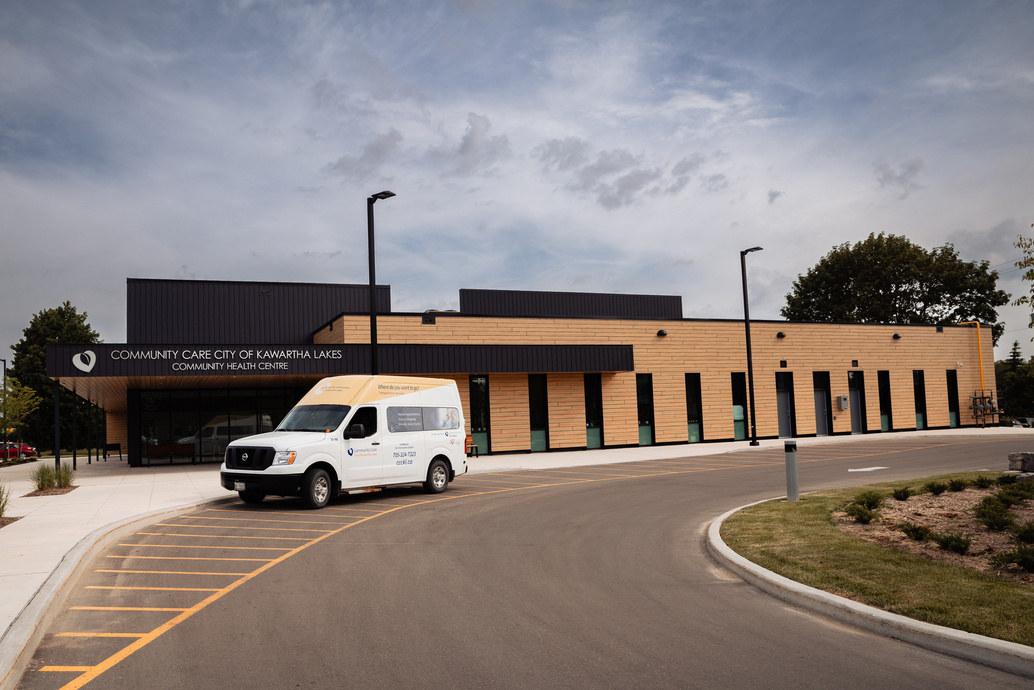
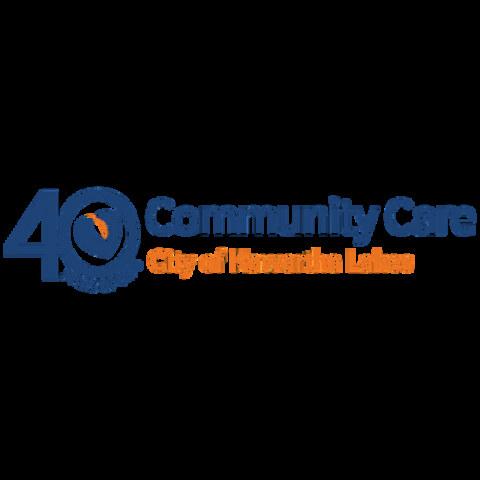

DAVID MACMILLAN AND HIS WIFE MARILYN moved moved to Lindsay in July 2024 to be closer to nature.
Lindsay Advocate: Why did you choose to move to here?
DAVIDMACMILLAN: We moved from Oakville, as we wanted to be on the east side of Toronto and close to trees, lakes and trails. Nice to be in a small town, close to all we need, and I have a brother in Peterborough.
Lindsay Advocate: What is your favourite thing about Kawartha Lakes so far?
DAVID MACMILLAN: Walking along the Scugog river, hiking the Victoria Trail, day trips throughout the Kawartha and Haliburton Regions. Finding live music and attending shows at the
beautiful Academy eatre, especially the Sunday afternoon open mic. I have also enjoyed several Lindsay Muskies games and the Friday night Lindsay Social Dance Club. We visit the library on a regular basis and Kawartha Lakes Museum & Archives is excellent.
Lindsay Advocate: What are your favourite local restaurants or shops?
DAVID MACMILLAN: We have always focused on supporting Canadian businesses and products. Favourite restaurants include e Olympia, e Cat & e Fiddle and e Pie Eyed Monk, as I prefer to support places that serve Ontario craft beer. Love the Kawartha Dairy drive thru, Burns Bulk Food and the Saturday morning Farmer’s Market.
Lindsay Advocate: What do you think is missing from Kawartha Lakes?
DAVID MACMILLAN: Live music with original or more creative set lists. We are very big music fans!
Lindsay Advocate: How were you involved in your previous community and how might you like to get involved in Kawartha Lakes?
DAVID MACMILLAN: I volunteer at the Canadian blood services clinics here in Lindsay and Fenelon Falls. I joined the local Probus Men’s Group and I attended my first 100 Men Kawartha Lakes gathering this March. Are you new in town? If you moved to Kawartha Lakes within the past two years and want to be featured here, email us at info@lindsayadvocate.ca.



